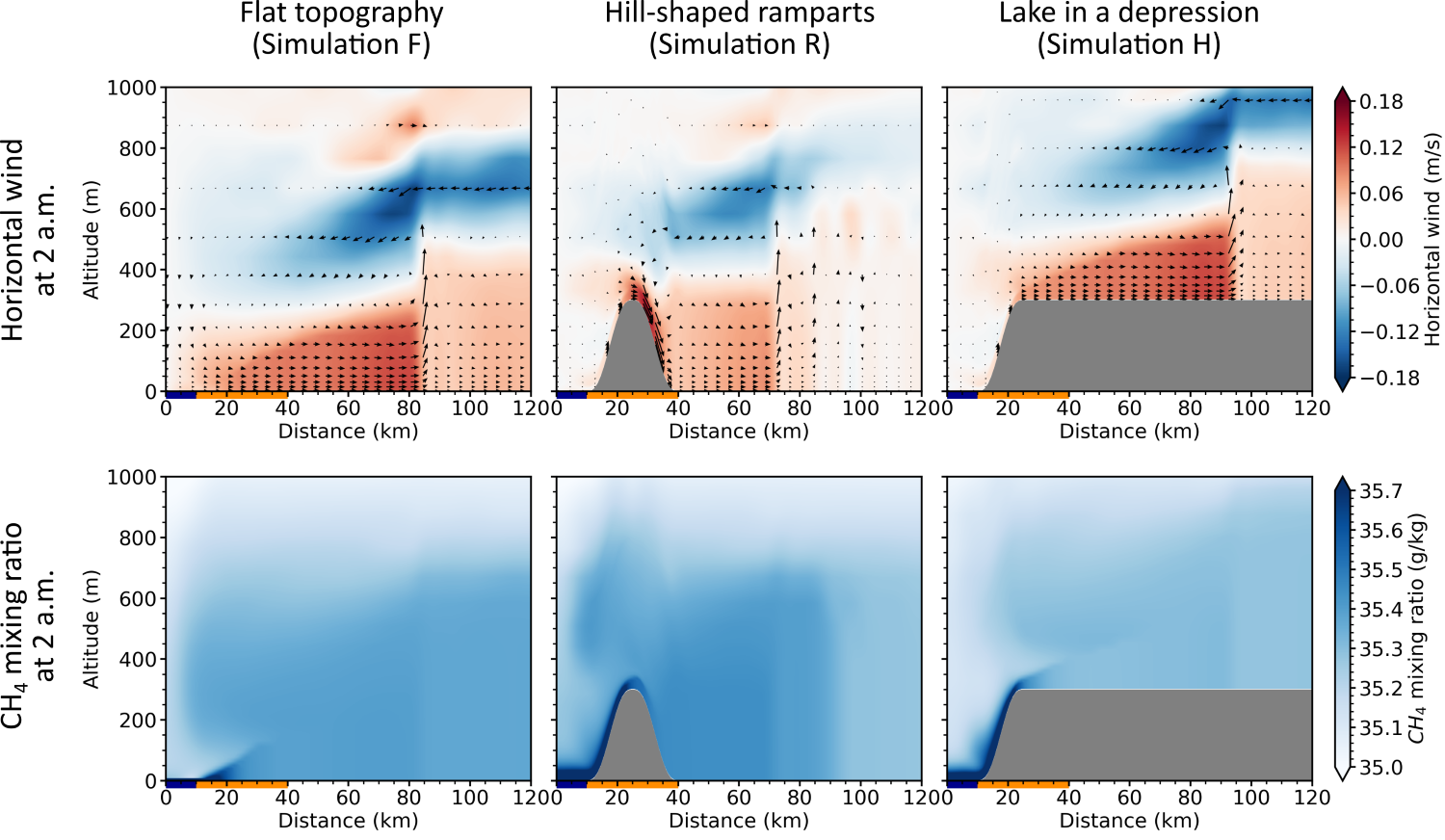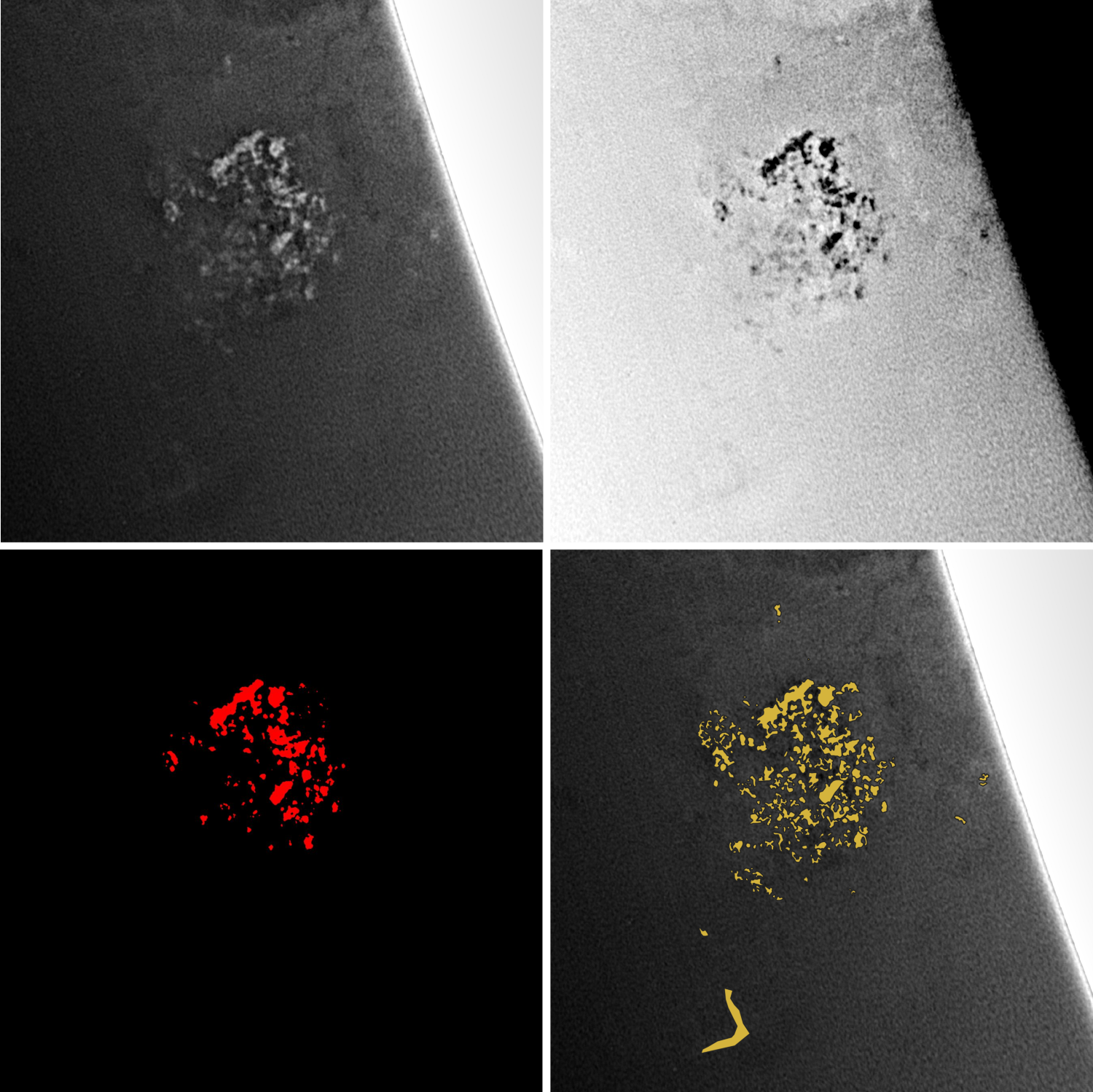Titan’s methane: from lakes to clouds
- 1Laboratoire de Météorologie Dynamique / Institut Pierre-Simon Laplace (LMD/IPSL), Centre National de la Recherche Scientifique (CNRS), Sorbonne Université, 4 place Jussieu, Tour 45-55 3e étage, 75252 Paris, France.
- 2Laboratoire Atmosphères Observations Spatiales / Institut Pierre-Simon Laplace (LATMOS/IPSL), Université Paris-Saclay, Université de Versailles Saint-Quentin-en-Yvelines (UVSQ), Sorbonne Université, Centre National de la Recherche Scientifique (CNRS), Guy
- 3Department of Space Studies, Southwest Research Institute (SwRI), Boulder, CO, USA.
- 4Departamento de Física Aplicada, Escuela de Ingeniería de Bilbao, Universidad del País Vasco / Euskal Herriko Unibertsitatea (UPV/EHU), Bilbao, Spain.
Titan’s methane cycle is similar to the Earth’s water cycle in many ways. Liquid methane is stable at Titan’s surface, where the pressure is around 1.5 atm and the temperature around 94 K. Methane evaporates from the methane lakes and seas, and condensates in the troposphere, forming clouds and precipitations. Contrary to Earth, where water vapor is a trace gas, methane amounts for ≈5% of Titan’s atmosphere (Niemann et al. 2010). However, clouds seem to be less abundant there than on our planet, covering around 1% of the moon while clouds cover around 60% of Earth’s surface. Our knowledge on Titan’s surface and clouds mostly comes from the Cassini-Huygens mission (2004-2017), which collected a huge amount of data, including many images, and a sounding profile through the atmosphere. While awaiting for the next in situ mission to Titan (Dragonfly, NASA, to be launched in 2028), models are a necessary tool to continue to explore the mysteries of Titan’s methane cycle.
Modeling the methane cycle has already been performed at several scales: at planetary level, with global circulation models (e.g. Lora et al. 2019); at regional and local scales to study the local dynamics (e.g. Chatain et al. 2024), and at clouds scale. Methane convective clouds have been modeled in 2D (e.g. Barth and Rafkin 2010), and a methane thunderstorm has been reproduced in 3D (Hueso and Sánchez-Lavega 2006). Nevertheless, many questions remain. Here we focus on regional scales: on lakes and on clouds. How are lakes included in the methane cycle? What is the impact of lake morphology and of the surface properties around them? How do storm clouds form in the troposphere? How do they sometimes become global storms? How much rain do they produce, and how often?
To tackle these questions, we first used a regional model called mtWRF (Rafkin and Soto 2020), and we studied the effects of changing the surface properties around a lake, namely the roughness, emissivity, albedo and thermal inertia (Moisan et al, in rev.). We find that these surface properties only have a minor impact on the atmospheric circulation created by the lake. Indeed, the shape of the atmospheric circulation seems to always remain the same: a thermally direct circulation, with a breeze flowing from the lake to the land at the surface. Adding topography does not change the global shape of the lake breeze either, but it creates a deeper moist layer above the lake, and increases the injection of methane in the atmosphere (see Figure 1). One of the main perspectives of this study will be to add wetlands around the lake, as land is expected to be soaked with methane there.

Figure 1: Adding topography around a lake causes the accumulation of methane vapor above the lake, and increases the altitude of methane injection in the atmosphere.
In our regional model around a lake, the condensation of methane in the atmosphere is not allowed, thus clouds cannot form. Moreover, we do not observe saturation conditions, which could be reached higher in altitude for instance, or at other seasons. To study cloud formation, we develop a convection resolving model, coupling a dynamical core based on a modified version of WRF with physical schemes deriving from those developed for the global circulation model Titan PCM (de Batz de Trenquelléon et al. 2023). In these physical schemes the microphysics of haze and clouds is implemented, enabling the formation of clouds and precipitations. We aim to better understand the structure and formation mechanism of clouds, and to compare the model results to Cassini images. To do this, we perform new analyses of Cassini/ISS (Imaging Science Subsystem) images, with the objective to analyze cloud shapes, and to quantify cloud dynamics and lifetimes. Figure 2 shows an example where a Cassini/ISS image is used to automatically detect clouds in an image.

Figure 2: Example of automatic cloud detection with Cassini/ISS images (image N1467450031 2, taken at the very beginning of the Cassini mission, on 2004/07/02). Top left is the processed image with usual processing. Top right is the same image, but processed to make automatic cloud detection easier. Bottom left is the result of the automatic detection, while bottom right is a manual cloud selection.
References
Barth, Erika L. and Scot C. R. Rafkin (Apr. 1, 2010). “Convective Cloud Heights as a Diagnostic for Methane Environment on Titan”. In: Icarus. Cassini at Saturn 206.2, pp. 467–484. issn: 0019-1035. doi: 10.1016/j. icarus.2009.01.032. url: https://www.sciencedirect.com/science/article/pii/S0019103509000591 (visited on 09/20/2023).
Chatain, Audrey et al. (Mar. 15, 2024). “The Impact of Lake Shape and Size on Lake Breezes and Air-Lake Exchanges on Titan”. In: Icarus 411, p. 115925. issn: 0019-1035. doi: 10.1016/j.icarus.2023.115925. url: https://www.sciencedirect.com/science/article/pii/S0019103523005043 (visited on 01/03/2024).
De Batz de Trenquelléon, Bruno et al. (Oct. 1, 2023). “Simulated Methane Clouds in the Titan Troposphere with the Titan PCM”. In: 55, p. 208.07D. url: https://ui.adsabs.harvard.edu/abs/2023DPS....5520807D (visited on 05/10/2024).
Hueso, R. and A. Sánchez-Lavega (July 2006). “Methane Storms on Saturn’s Moon Titan”. In: Nature 442.7101 (7101), pp. 428–431. issn: 1476-4687. doi: 10.1038/nature04933. url: https://www.nature.com/articles/ nature04933 (visited on 09/20/2023).
Lora, Juan M. et al. (Nov. 15, 2019). “A Model Intercomparison of Titan’s Climate and Low-Latitude Environment”. In: Icarus 333, pp. 113–126. issn: 0019-1035. doi: 10.1016/j.icarus.2019.05.031. url: https://www. sciencedirect.com/science/article/pii/S0019103518307838 (visited on 01/15/2024).
Niemann, H. B. et al. (2010). “Composition of Titan’s Lower Atmosphere and Simple Surface Volatiles as Measured by the Cassini-Huygens Probe Gas Chromatograph Mass Spectrometer Experiment”. In: Journal of Geophysical Research: Planets 115.E12. issn: 2156-2202. doi: 10.1029/2010JE003659. url: https://onlinelibrary. wiley.com/doi/abs/10.1029/2010JE003659 (visited on 04/09/2024).
Rafkin, Scot C. R. and Alejandro Soto (Nov. 15, 2020). “Air-Sea Interactions on Titan: Lake Evaporation, Atmospheric Circulation, and Cloud Formation”. In: Icarus 351, p. 113903. issn: 0019-1035. doi: 10.1016/j.icarus. 2020.113903. url: https://www.sciencedirect.com/science/article/pii/S0019103520302827 (visited on 11/02/2023).
How to cite: Moisan, E., Chatain, A., Spiga, A., Rafkin, S., Soto, A., and Hueso, R.: Titan’s methane: from lakes to clouds, Europlanet Science Congress 2024, Berlin, Germany, 8–13 Sep 2024, EPSC2024-523, https://doi.org/10.5194/epsc2024-523, 2024.